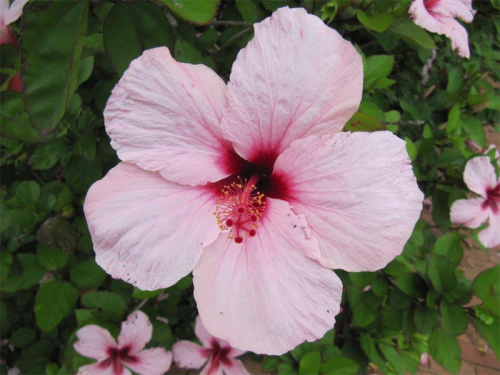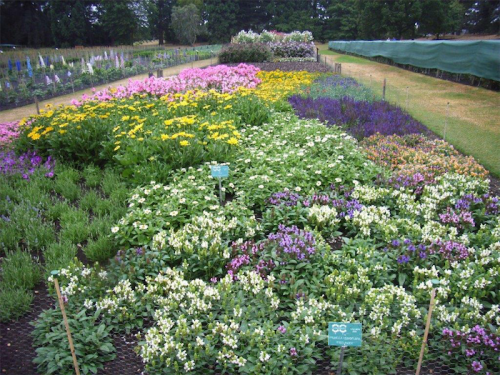
WHEN I featured Crepe myrtles recently some readers have reported plants that have been in for several years were not flowering well.

Crepe myrtles (Lagerstroemia indica) along with Hibiscus syriacus flower from late summer to early autumn. Both only flower fully on the new season’s wood. This means it’s important to prune each year when dormant in winter.
I usually prune by up to but not more than a third off at any one time. Actually, this practice applies to almost any plant, including most native plants to encourage maximum flowering.
Hibiscus syriacus originates from China, although it had reached the Middle East by the 16th century.
Peter Valder, in his book “Garden Plants of China”, notes the old Chinese name for Korea was “Chin Yueh” or the “Land of Hibiscus”. It is the national flower of South Korea. In the west it is commonly known as the Rose of Sharon, growing in profusion in the Middle East.
I have a group of three in our front garden trained as standards and they are now in full flower. Hibiscus range in a variety of colours from single to double flowers. They are a great drought-hardy plant losing their leaves in winter. Several of the varieties listed in my 1898 copy of William Robinson’s “The English Flower Garden” are still available today.
I ONLY recommend certified organic products. They include Multicrop Seaweed Plant Nutrient, Neutrog Seamungus (also in pellet form), Eco Seaweed and Eco Aminogro. They are suitable for all plants, including natives and edible crops.
I also recommend Neutrog Go Go Juice as an added benefit for the health of the soil. Go Go Juice is teeming with microbes that activate the natural processes occurring in the soil. They speed up the decomposition of the residual organic matter and mineral compounds. In turn, this activates the nutrient availability and stimulates growth.

THE last recommendation in my series of English gardens worth visiting in the northern summer is Wisley, the jewel in the crown of Royal Horticultural Society gardens.
Located 64 kilometres south of London, it is the second most visited garden in Britain after Kew Gardens. Last year 1.2 million gardeners visited to explore and gather ideas around the 97-hectare garden. Besides the series of model gardens (examples for the small residential garden) is the spectacular Bicentenary Glasshouse.
The Portsmouth Trial Gardens assess hundreds of new varieties of plants aspiring to receive an Award of Garden Merit, which virtually guarantees huge sales for the breeder.
The gardens were established by GF Wilson, a Victorian businessman and RHS member in 1898. When he died in 1902 it was bought by Sir Thomas Hanbury, who then donated the gardens to the RHS in 1903. More at rhs.org.uk/wisleywhatson
Jottings…
- Cut and freeze herbs for later culinary use.
- Take out petunias and replace with polyanthus, violas and pansies for winter colour. It usually takes about 6-8 weeks from planting to full flower.
- Sow sweet peas, deep dig to 20-30cm, add well-rotted compost, but no chemical fertilisers in the hole. Make sure a frame or poles are in place for support.
- Try using an apple corer to rid weeds from lawns.
Who can be trusted?
In a world of spin and confusion, there’s never been a more important time to support independent journalism in Canberra.
If you trust our work online and want to enforce the power of independent voices, I invite you to make a small contribution.
Every dollar of support is invested back into our journalism to help keep citynews.com.au strong and free.
Thank you,
Ian Meikle, editor




Leave a Reply